|
The Education Act
The Elementary Education Act of 1870, commonly known
as Forster's Education Act, after William Forster, who
drafted the law, which was Passed on the 17th February,
1870. Local authorities had to provide details including
the number of children in their area and the existing
educational provision. The number of children in
education was compared with the number of children of
school age, recorded in the census returns. If there was
a shortfall, a school board for the district would be
created. Board members were elected by the ratepayers.
The number of members depended upon the size of the
local population.
The boards were financed by either a local poor rate
or a municipal rate and could apply for a government loan.
They also had to create a by-law to make attendance
compulsory unless there was a good reason, such as
sickness, living more than three miles from a school, or
having reached a high standard of education. All schools
were inspected and could apply for an annual government
grant.
In October, 1870, Wolverhampton Council decided to
apply for the formation of a School Board for the
Borough. The election for eleven Board members was held
on the 28th November. The Board included six members of
the council: Henry Hartley Fowler, who was chairman,
Harry Jones, Sir John Morris, W. Edwards, John Hawksford
and Thomas Bantock. The Board’s first meeting was held
in December 1870 and the Board took over the British
Schools in Walsall Street, the Chillington School in
Monmore Green and the Ragged School in Salop Street.
|
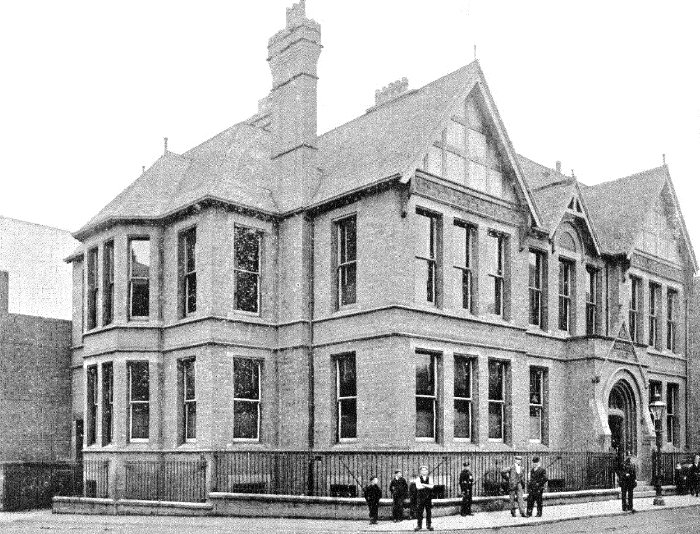
The School Board offices in Stafford Street.

From the 1892 Wolverhampton Red Book.
|
The Ragged School
Wolverhampton’s Ragged School began
life in the notorious Carribee Island district off
Stafford Street. It began with evening classes in 1848,
taught by volunteers. The area proved to be too
unhealthy for the school, which soon moved to Princes
Alley. In 1849 there were 252 children attending the
school, with an average attendance of 52. The ragged
schools were for children from poorer families who could
not afford to contribute towards their education.
At a meeting held in the House of
Lords on the 13th May, 1861, Mr. Leigh, who had been a
stipendiary magistrate for Wolverhampton for 14 years,
as well as being involved with the Ragged School
Management Committee, stated the following:
"We took boys and girls from all
parts of South Staffordshire; and I can state, as a
matter of fact, founded on my own experience there, that
there was a very considerable diminution in the number
of juvenile offenders in that district in consequence of
the successful operation of the Wolverhampton Ragged
School. The change was so marked that we received
letters from Major Fulford, the governor of Stafford
jail; from Colonel Hogg, the chief constable of the
county constabulary force; and from Captain Segrave, the
chief constable of the Wolverhampton Borough Police, all
testifying to the fact, and attributing the diminution
in the number of juvenile offenders to the ragged
school. We saved many boys from a life of crime."
The Ragged School moved to Salop
Street, on the corner of School Street in 1852. The
school became the Day Industrial School in 1881,
catering for 150 boys and girls. Activities included
basic academic study, mat making and wood chopping for
boys and cooking and washing for girls. In the 1880s the
average attendance was between 60 and 80. The school
closed around 1919. |
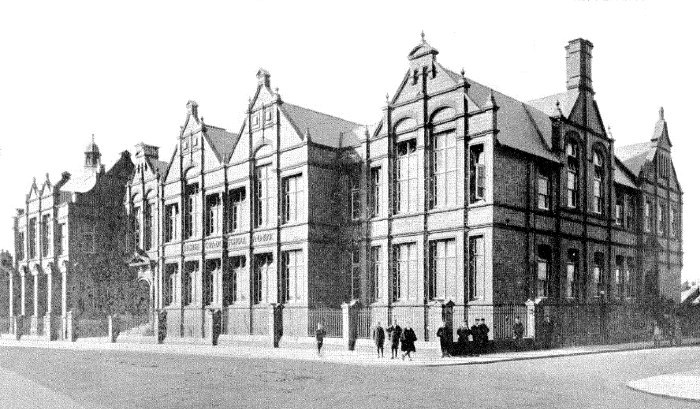
The Higher Grade School, which opened in
January 1894, with accommodation for 964 children.

Looking up Cheapside in the 1870s towards the
Exchange Building.
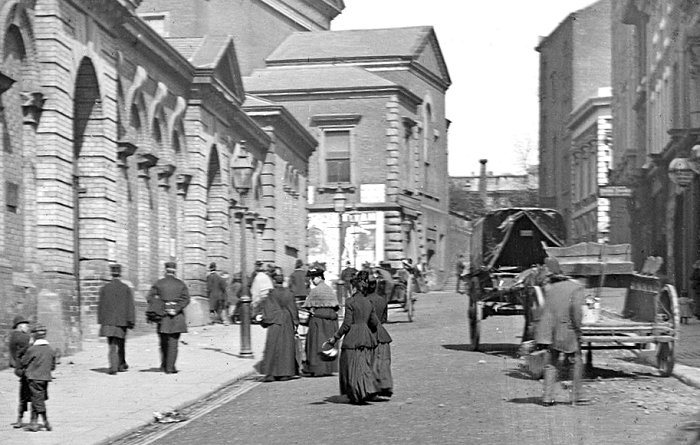
Another view of Cheapside, the old Market Hall
and the Exchange.
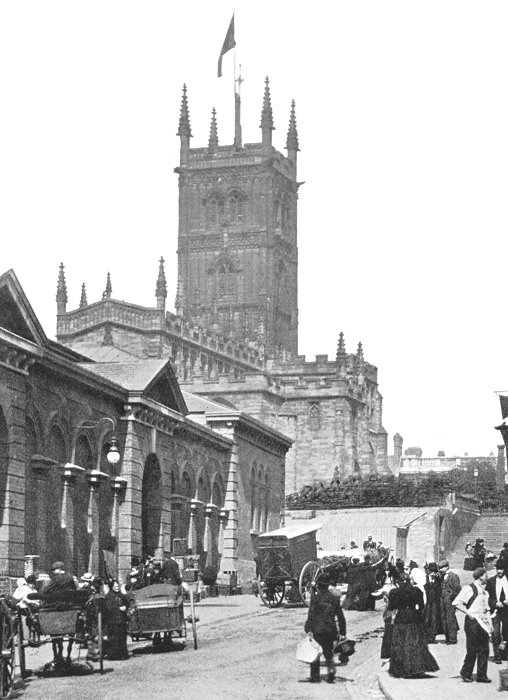 |
A view of Cheapside, the old
retail market and St. Peter's Church, after the Exchange
had been demolished in 1898. |
| An advert from 1892. |
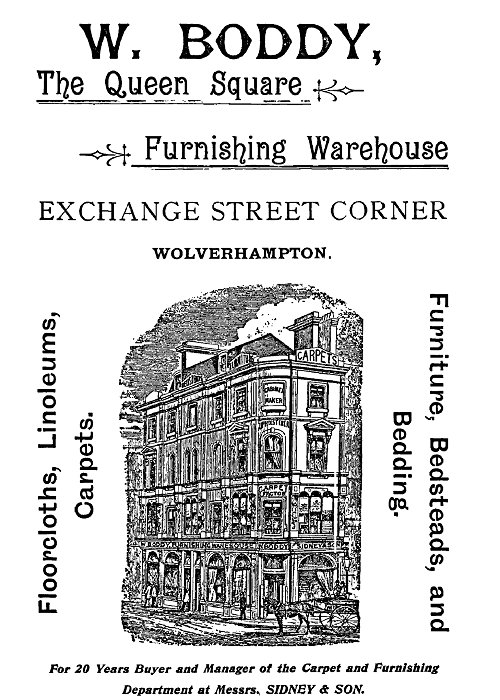 |
 |
An advert from 1884. |
| An advert from 1884. |
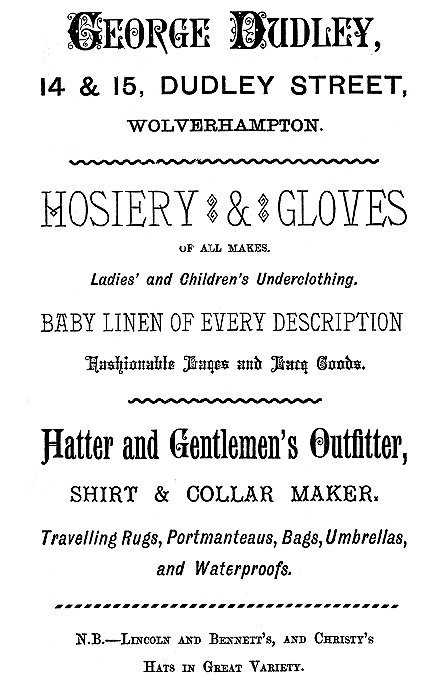 |
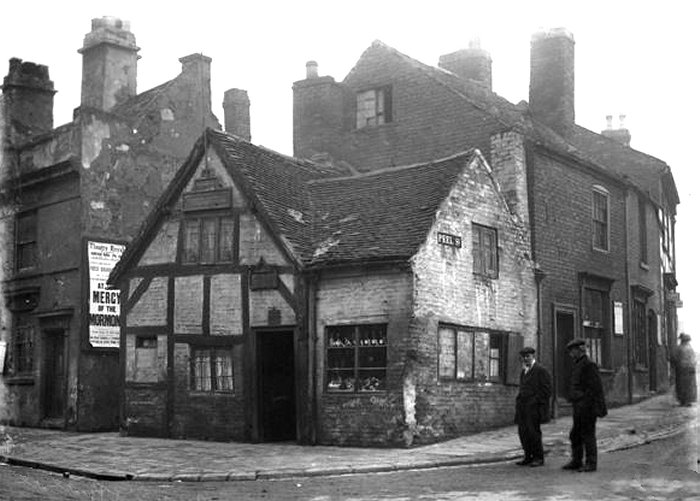
The junction of Salop Street and Peel Street.
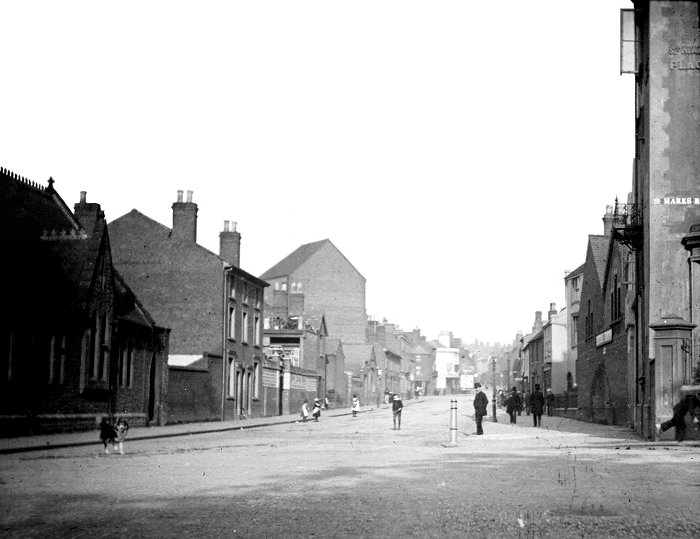
The view looking up Salop Street
towards the town centre. On the right is St. Marks Road
and on the left is St. Mark's School, built in 1849. It
catered for 348 boys, 266 girls and 304 infants. The
area changed completely with the building of Ring Road
St Marks and the Chapel Ash island. |
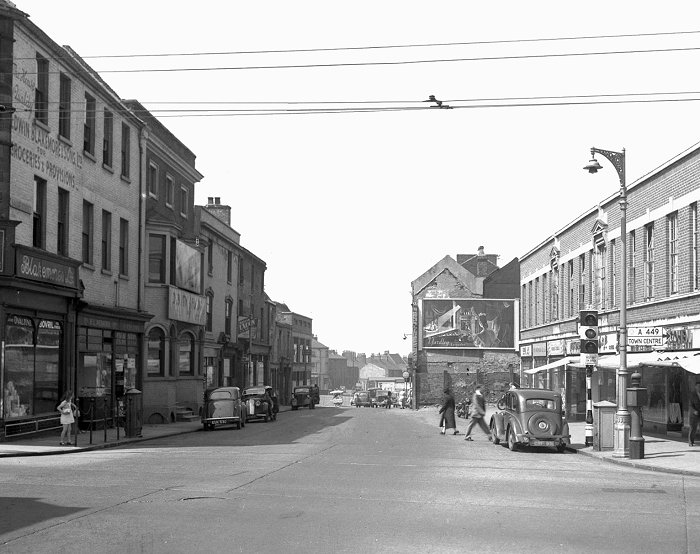
Looking westwards along Salop Street in the
1950s.

An advert from 1877.

Compton Road.
 |
|
 |
|
 |
Return to Extreme
Cold & Epidemics |
|
Return to
the beginning |
|
Proceed to
West Park |
|